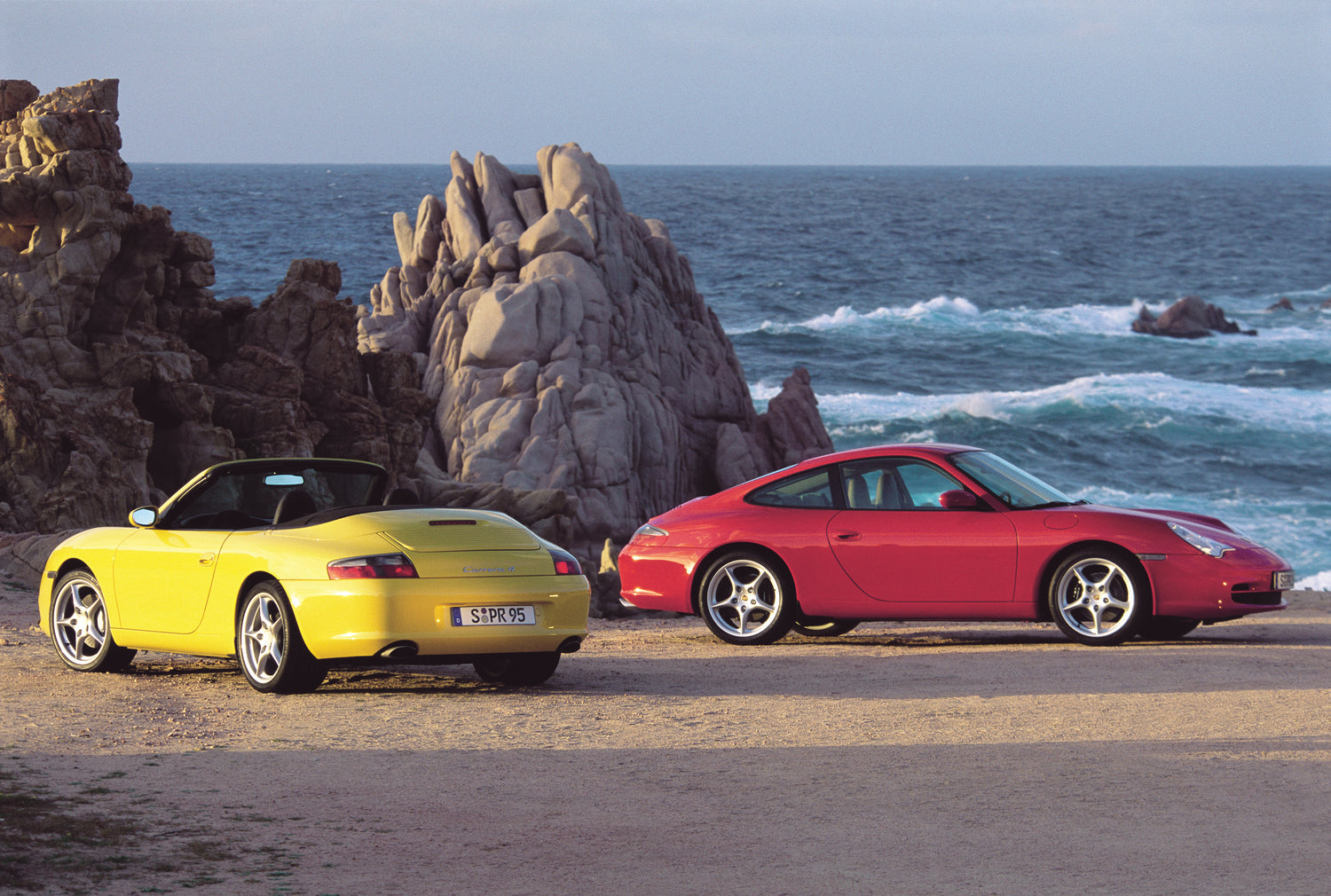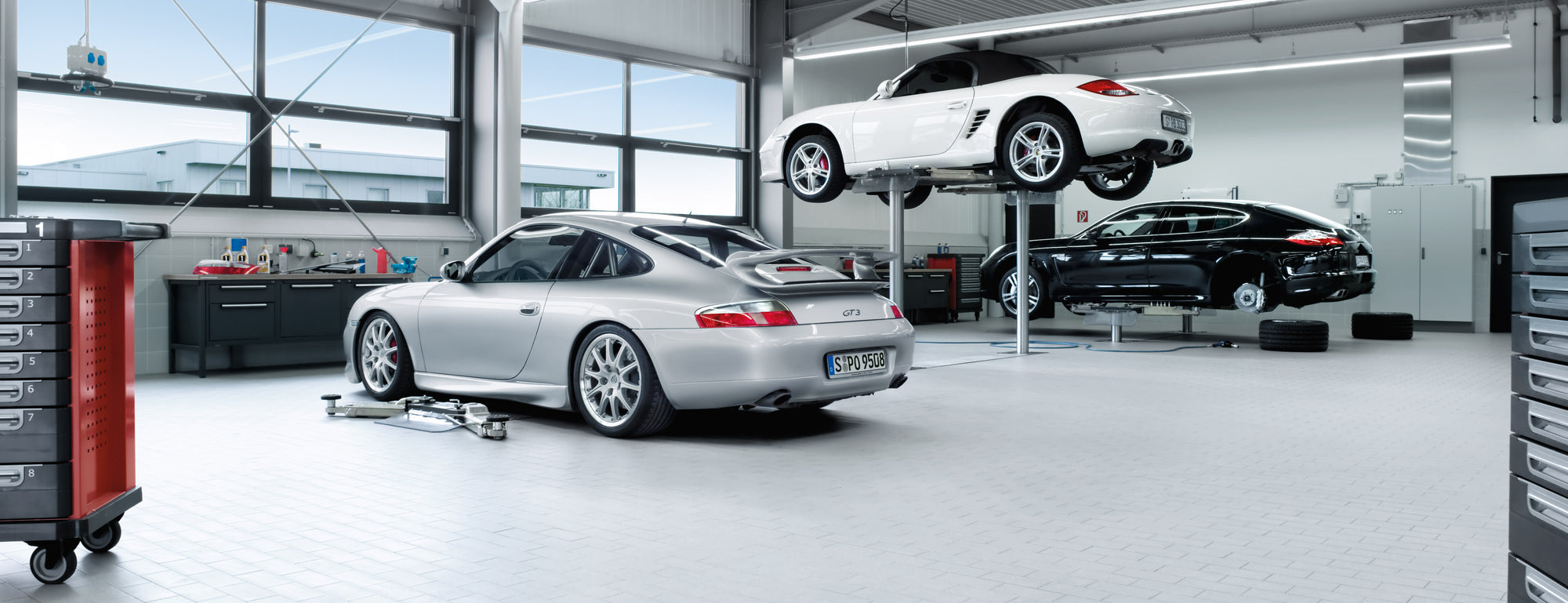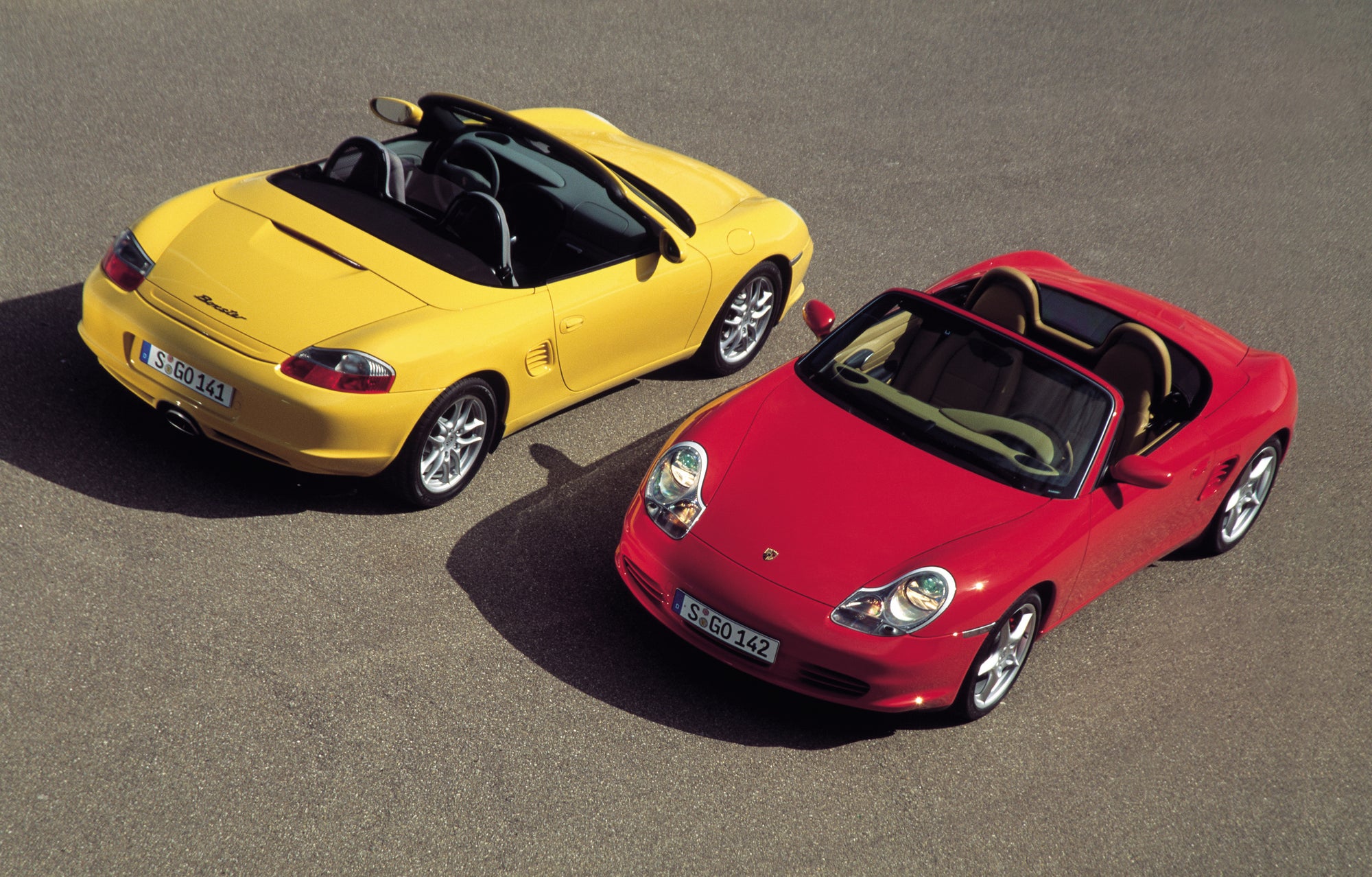Introduction
So, you are looking to buy a 911 but unsure which one to get. The classic, air-cooled models are charming but also too expensive and probably a bit underwhelming in terms of performance. The modern range is too heavy, detached from the original concept, and too common. You want something light, analogue, compact in size and powerful enough to be fun but still modern enough that it has working A/C and traction control. The only model in the 911 range to fulfil those requirements, and on a budget, is the 996. If you know anything about 911, you will recognize this generation as one of the least loved and often criticized by the brand purists. But, as the market evolves, the 996 is getting appreciated more and more, which is something it lacked for most of its life. Finally, even the hard-core air-cooled fans understand just how significant the 996 was and how big its role in 911 history is. With affordable prices, thrilling performance, and a wide range of available models and versions, the 996 is an ideal starter 911 and possibly a good investment. So, let's help you find the perfect example.

What Is It?
By the early 90s, it was painfully obvious that Porsche could not keep selling the same old platform with outdated engine technology forever. The 964 and 993 generations sold in less than 70,000 examples each, which put the company in a difficult financial situation. The only way out was a completely new model, which would keep the recognizable shape but introduce much-needed improvements. The best way to achieve that was to start with a clean sheet and the Porsche 996 was just that. The first all-new 911 since the original 1963 model, a completely new platform, a significant twist on the original design, and a water-cooled engine for the first time in history. Yes, this last feature sparked outrage since it was one of the core characteristics of the 911 as a model, but Porsche was left with no choice. It needed to extract more power from the flat-six engines and make the car compliant with rising environmental standards. Even though Porsche risked a lot with 996, the results speak for themselves. When the production ended, over 175,000 vehicles were delivered, a tremendous success that paved the way for the modern 911 era.

Porsche 996 Timeline
The Porsche 996 production started on the 17th of July 1997, with the first cars being delivered shortly after. The lineup began with the 996 Carerra with a 3.4-litre M96 flat-six engine but in 2002, with the introduction of the restyled model, the 911 got the 3.6-litre engine upgrade. Porsche included models like Carerra 2, Carerra 4, and 4S. Turbo and Turbo S models featured too (with a different family of 3.6-litre engine) and unique performance versions like GT3, GT3 RS and GT2. The GT3 was offered for the first time on the 996 model and, as we all know, became a Porsche legend in its own right. The 996 generation was available as a Coupe, Convertible, and Targa version, which featured an opening glass roof similar to the 993 Targa model. The production stopped in 2004, but speciality models like GT3 and Turbo were available until 2006.

The Porsche 996 Bodywork
Porsche was scrutinized for having the identical front-end design on the first-generation Boxster (986) and 996 911. The two models not only looked the same, but they also shared many components like wings and bonnets. But that was not all; the headlights' controversial "fried egg" design was also problematic since many enthusiasts simply didn't like their look. Porsche needed to follow the interchangeable parts design philosophy as this significantly reduced the manufacturing and vehicle production costs. It was in the finance department’s interest and the only way Porsche would survive the difficult economic period. However, with the 2002 restyle, the 996 got significant front and rear end design revision which got rid of the controversial “fried egg” headlights. The standard “narrow” body was used for Carrera 2 and 4 but Carrera S got the “wide body” treatment similar to Turbo models.

One of the improvements that the 996 brought to the 911 range was the completely new and much more efficient production and paint process. The result was increased structural rigidity and better quality of the materials and paint. Some 25+ years later, this means that the 996 has no problems with corrosion (except those examples that have been poorly repaired after some accident damage).
Pre-2002 convertible models were built with plastic rear screens in the cloth roof. These were prone, to cracking, creasing and turning opaque. These were replaced with glass versions on all 2002 models onwards. Electric motors that power the roof can get stuck, so when inspecting a convertible 996, ensure the roof works perfectly whilst opening and closing (and without any mechanical groaning!). At the time, the convertible buyer were offered a hardtop as an optional extra; if the car came with it, it was an advantage for winter use, but an awkward thing to store during the summer.

One tip to see if the car suffered front-end damage is to inspect the front boot. If the carpets are moist, there’s a chance that some panels haven’t been repaired to original specification.

The Porsche 996 Engines
The engines used in 996 911 are the 3.4-litre flat-six originally installed in standard models and 3.6-liter flat-six which replaced it in 2002, when a refreshed model was introduced. The Turbo models were equipped with twin turbocharged 3.6-litre engines. The internet is full of various horror stories involving the 3.4-litre unit, and the reality is that this engine had its share of problems. Interestingly, the 3.6-litre motor, an older "Mezger" design found in Turbo models, used different components, dry-sump lubrication and proved to be much more reliable.

Two main problems with the 3.4-litre M96 are IMS and bore scoring. The intermediate shaft (IMS) situation has been well-documented and has affected cars from the 2000 model year when Porsche switched from dual to single IMS system. The result was that a single IMS wasn't so strong and prone to breaking, causing catastrophic engine failures. There is no way to see if the IMS shaft is about to fail, but if the previous owner didn't complete preventive maintenance, it would be a great way to lower the price when negotiating. However, replace the old IMS with the new one immediately after the purchase. Fortunately, this is a routine job, and parts are readily available.
The bore scoring is an even more serious issue, which is expensive to repair but can be repaired if noticed early. For those who don't know, bore scoring is caused by undesirable friction between the piston and cylinder wall, which can cause extensive damage, increased oil consumption and overheating. It is widespread on standard Porsche engines from the late 90s and early 2000s.

But how do you know if the 996 you are looking to buy is affected by bore scoring? The first way is to invest in a pre-purchase borescope inspection (using a tiny camera to inspect the cylinder walls). The second way is to inspect the cylinders from below, removing the oil sump and getting to the bottom of the engine block. We suggest the second option, not only because it is easier to perform but because it will give you more information, but a vehicle seller is unlikely to allow you to do this. The bore scoring on M96 engines always starts at the bottom of the cylinder wall, on the second cylinder bank (right side of the engine bay), and often on cylinder #6. If you catch it early, the problem can be reduced (but not solved) by changing the oil grade. However, if you invest in borescoping and you see the lines all along the cylinder walls, the engine is ready for a complete and costly rebuild, and we suggest you look for another car. There are some suspiciously cheap rebuild options on the market, but in order to do it properly, it takes money, time, and an experienced specialists.
Porsche 996 Transmission
This generation of 911 was offered with two gearboxes – a 6-speed manual and a 5-speed automatic. The automatics were Tiptronic units. The 996 was the first Porsche 911 model that was more popular as an automatic, and it showed in which direction the industry was heading. Manual and automatic were both dependable. Manual variant clutch replacement is expensive due to the requirement for engine removal.

Porsche 996 Suspension And Brakes
Although the suspension components were all-new, Porsche kept the conventional layout. There are no particular problems with the suspension, and it is known to be able to endure all the challenges of everyday use. However, since the youngest 996 is now 20 years old, it is worth checking the all bushes, springs, shocks, etc. The car should feel planted and precise, and if the ride feels sluggish and there are strange clunking sounds coming from underneath, it is time for a complete overhaul. Don’t let this alarm you though, we at FrazerPart carry all these replacement 996 suspension arms in stock.
Porsche 996 911 and Boxster 986 Interchangeable Parts
You have probably noticed that, at least from the front, the Boxster 986 and 996-generation of the Porsche 911 look alike, and you have wondered if any of the parts are the same. The Boxster came a year before the 996 and showcased a new design with new front fascia, headlights and water-cooled flat-six engines. The two models share some parts, but each car's main components, engines, suspension, and platform, are predominantly unique. The two Porsches are very similar in the front end and share the wings and bonnet; although the bumpers look different, they can be interchanged. The similarities are also visible in the interior, where the central console, seats, trim, A/C, and so on are the same. The dash layout is almost identical, but the 911 has a famous 5-dial dash, while the Boxster has a 3-dial setup.

Porsche 911 996 Parts by FrazerPart
With an average weight of 1.4 tons, at least 300 hp, precise handling, and that gorgeous flat-six engine note, the 996 is the rising star of the Porsche collector market. It is every bit as 911 as the cars before (or after) it, but it is noticeably more affordable. This is what makes it so tempting, and although fast, the 996 is not super quick and dull in everyday traffic. It has just the right amount of power to make every outing exciting but not get you in trouble. Of course, to fully enjoy this model, you will need parts support, and this is where FrazerPart excels. Whether restoring or just maintaining the 996 911, we have everything you need for a complete mechanical overhaul, along with some exterior and interior parts and components. You can shop confidently, knowing that all our products are original items at affordable prices.

Which One To Get?
This is a tricky question, and the 996 range can be separated into two main directions. The first is standard models (Carrera 2,4, 4S), which have 300 to 345 hp. Those are the most affordable and most common cars. The second part of the range is the high-performance models (Turbo, GT2, and GT3), which are significantly more expensive, with much lower production figures, but are far more desirable. Regardless of your aim, the most important thing is comprehensive maintenance records, proof of any repairs, and big-ticket items (like IMS) that are already sorted. The mileage shouldn't be of concern if the car is properly maintained. Our choice would be a manual since those cars are rarer and more engaging to drive.

Conclusion
Several factors contributed to the rising popularity of the 996 911. First, with lower prices, these cars are attractive to younger buyers who want a piece of 911 magic but cannot afford expensive models. Second, the new generation of Porsche enthusiast look at the 996 as a classic model, not a car that seriously offended purists and attacked almost every pillar of the 911 legend. Third, in the world of heavy 911s that are only fun at illegal speeds, the 996 is refreshingly analogue, usable and fun. That is why more and more people realize that the cure for 911 fever has been hiding in plain sites all along, and it is 996 911.







1 comment
Larry Jones
The rear spoiler raises automatically at 70 mph. This is done hydraulically with the two spoiler pistons and then restored to the home position when speed is reduced below 70 mph. As in my case, these pistons are prone to leak over time. I had mine replaced with electric ones last month.
The rear spoiler raises automatically at 70 mph. This is done hydraulically with the two spoiler pistons and then restored to the home position when speed is reduced below 70 mph. As in my case, these pistons are prone to leak over time. I had mine replaced with electric ones last month.